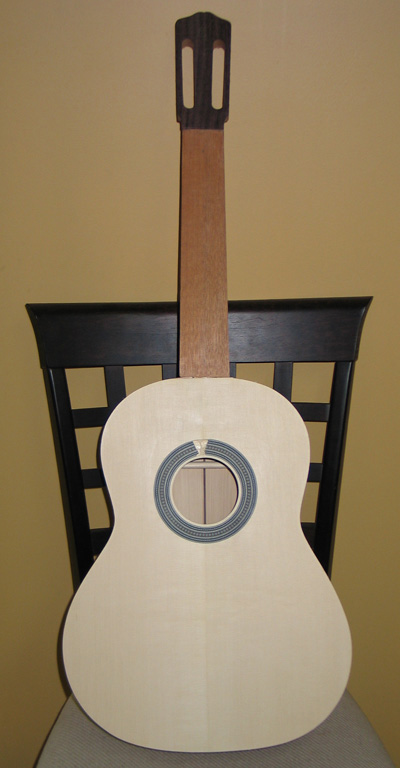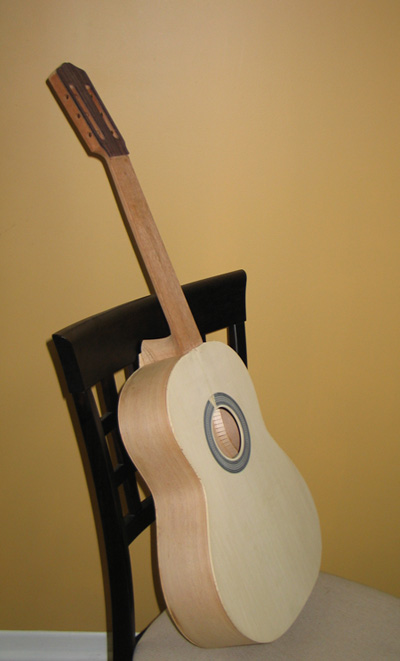Hello fellows,
been a while since I posted my first bracing pics. I've been working every week-ends ever since, except for one time I completly cracked up on side and had to reorder a set
 . Anyways, building this thing up, swearing once in a while
. Anyways, building this thing up, swearing once in a while  , I can finally say that it looks like a guitar. I closed the back and trimmed the overhangs yesterday. I'm quite proud, but not statisfied... I've done plenty of avoidable mistakes and I hopefully wont repeat them in the future. I also didn't respect the plans carefully. My sides are a little higher than intended. Depth at the heel/peak/tail are 90/94.5/99mm instead of 87/91.5/95 according to the Santos Hernandez 1933 plans.
, I can finally say that it looks like a guitar. I closed the back and trimmed the overhangs yesterday. I'm quite proud, but not statisfied... I've done plenty of avoidable mistakes and I hopefully wont repeat them in the future. I also didn't respect the plans carefully. My sides are a little higher than intended. Depth at the heel/peak/tail are 90/94.5/99mm instead of 87/91.5/95 according to the Santos Hernandez 1933 plans.
Here are some pics... and I'll post some questions below as I need some guidance.


So, next week-end, I want to route the purfling and binding ledge. I have the StewMac bit and bearings kit. But I have some questions about the bindings size. Mines are from the LMII serviced flamenco kit and made of Indian Rosewood. The thing is, they are as thick as the sides. Is that normal? I've also heard that with that StewMac kit, you had to route the purfling first, why is that so?
Best Regards,




 . I don't really mind though. Flamenco guitars usually have smaller bodies than classicals, but who knows what the result will be. Anyways, I'm no Santos Hernandez and achieving a perfect Santos 1933 sound is nearly impossible for me on a first attempt... and I don't have the original guitar to compare haha. (wished I did)
. I don't really mind though. Flamenco guitars usually have smaller bodies than classicals, but who knows what the result will be. Anyways, I'm no Santos Hernandez and achieving a perfect Santos 1933 sound is nearly impossible for me on a first attempt... and I don't have the original guitar to compare haha. (wished I did)